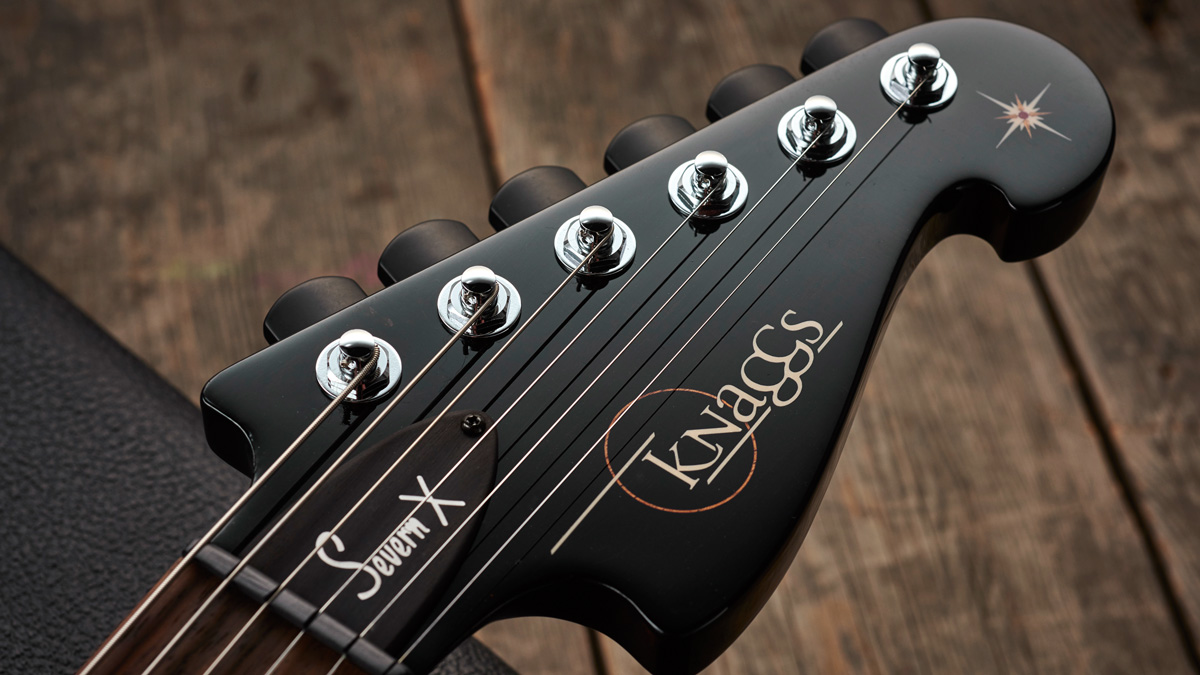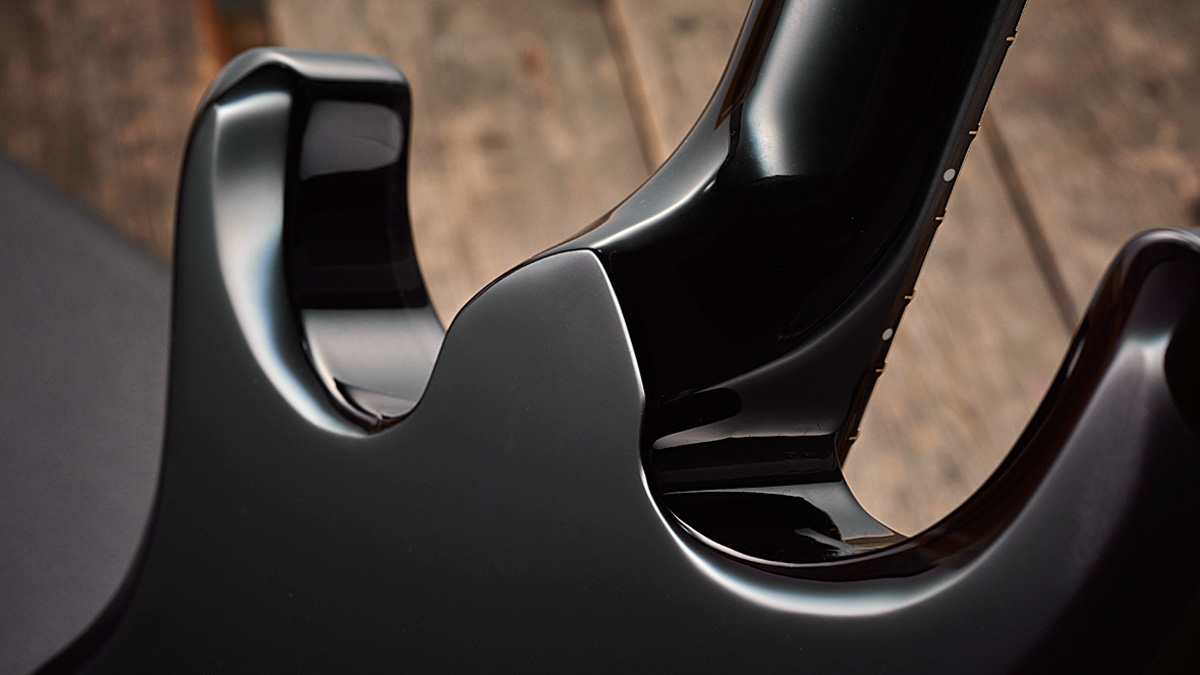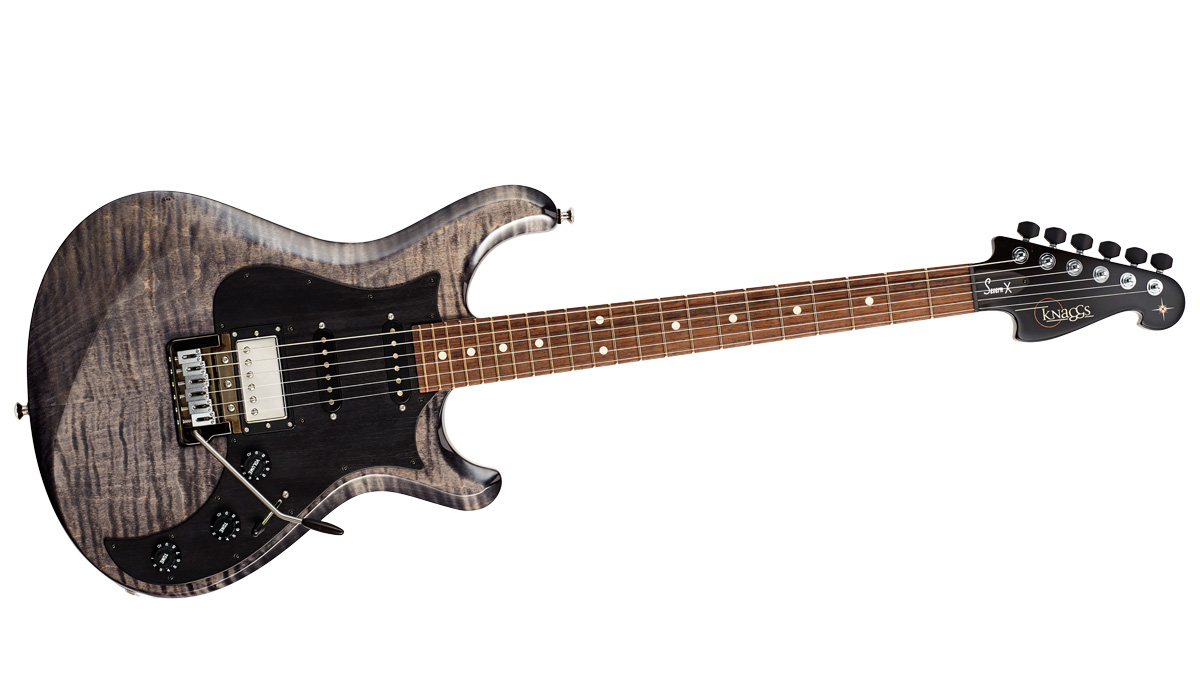MusicRadar Verdict
A fantastic instrument - a definite ‘keeper’.
Pros
- +
Superb player-informed build with excellent sounds, vibrato and superb resonance.
Cons
- -
Not much to see here - in the right hands, it’s damn near perfect.
MusicRadar's got your back
Away from the brouhaha of the big-company electric guitar industry, Joe Knaggs started “signing his own paintings” when he left his previous employer, PRS Guitars, and set up his eponymous operation in 2009, shipping his first guitar on 17 March 2010.
Many of his subsequent canvases have graced MusicRadar in recent years, either in our review section or in the hands of an increasing number of pros, not least Steve Stevens and Doug Rappoport. Each instrument we’ve seen remains a perfect illustration of guitar making in modern times. Knaggs was never a vintage-clone maker; instead, he brings many of his own concepts, including quite unique bridge designs, to pepper what most would consider a water-tight understanding of the craft of the guitar.
That said, Knaggs’ original Choptank, and to a slightly lesser extent the Severn, were far from mainstream pieces with enhanced sustain and clarity paired with a slightly home-spun appearance. Which is sort of where our Severn X slots in.
“Due to requests from artists and customers for a more modern feel, we developed the Severn X,” says Knaggs. So the X-spec offers a slightly thinner depth neck that’s slightly wider, too, with a flatter 356mm (14-inch) fingerboard radius and jumbo Evo frets. The neck and body back are mahogany and, as with the standard Severn, the X can be ordered in Knaggs’ ascending three tiers with the same options as the standard model.


If the Choptank was Knagg’s ‘Telecaster’, the Severn is his ‘Stratocaster’, although in this X guise you’d be hard pushed to tell, aside from the fact that it has the same scale length and six strings. First off, it’s not a bolt-on; the neck glues into the body leaving a V’d ‘boat bow’ heel. The body wood is mahogany topped with an approximately 16mm-thick slab of centred-joined figured maple (creating an overall depth of 45mm) that is carved away to create a forearm contour with lesser chamfers around pretty much all the other edges, front and back. This style of top-carve first appeared on PRS’s Mira - a pretty much exclusive Joe Knaggs design - and has subsequently featured on that brand’s S2 models.
The ebony-faced headstock is an interesting take on the Fender design, here with the simple, classy Knaggs logo and star and cross emblem with ‘Severn X’ in a nice script type on the truss rod cover. It slopes back like a Gibson headstock, providing just enough down-pull over the graphite nut. Tuners are rear-lock Gotohs, and we’re all set to hit that vibrato.
Mounted on a front-placed ‘hinge’, it is recessed into the top, giving it a very low-profile feel, although it’s essentially a Fender style with six block saddles themselves recessed in the walled design. The arm screws into the vibrato yet feels tight-fitting - it’s a very sleek, considered piece and as set, with D’Addario NYXL 0.010 to 0.046 strings, we have an up-bend of nearly a tone on the high E and just about a minor 3rd on the G with plenty of down-bend.
Along with the slightly flattened fingerboard radius (the standard Severn is 216mm/8.5 inches), we have Evo ‘gold’ frets, a nickel-free material that sits between standard nickel-silver and stainless steel in terms of hardness, which Knaggs calls “jumbo”, though these seem a bit more ‘medium jumbo’ to us, approximately 2.75mm wide with a height of around 1.4mm. It’s simple old-school stuff: dot inlays, visible fret tangs... but all perfectly executed, as with the setup and neck feel, and even the weight.
The 2.3mm-thick black-stained anegre scratchplate matches the ebony-faced head, but is the only black colour on the guitar, plastic parts excepted. The Faded Onyx top is actually a beautifully understated grey/black with the subtlest hint of silvery blue as the figure moves in the light. The mahogany sides, back and neck have a deep, rich but slightly translucent dark chocolate brown colour that supports the flatter brown of the fingerboard and those subtly golden-coloured frets.
Feel and sounds
If the build is smart, nothing prepares us for the X’s resonance. Even before turning on our amps, we’re absorbed by the unplugged sound - with a quick strum, the guitar comes alive. You can feel it vibrate from the top of the head to the base of the body. Game on, indeed.
We can’t help thinking, however, that its amplified voice is a little compromised, though not necessarily in a bad way. If we’re honest, there’s not a sound here we haven’t heard many times before. And more.
While the actual Seymour Duncan ATX-K single coils are new to us (custom wound for Knaggs and based on the Texas Hot), the TB-4 JB at the bridge certainly isn’t, and while the former produce direct, very Fender-y sounds on this platform with a little dark powered undercurrent, the JB kicks proverbial ass pushing the clean channels of our test amps into slightly hairy drive and the crunchier channels into thick and soupy bite. It’s simply a great classic rock lead/rhythm tone that always brings a smile to our face.
Even before turning on our amps, we’re absorbed by the unplugged sound - the guitar comes alive.
There is, however, a pull-switch on the bridge pickup’s tone control, which switches the JB to a single coil (voicing the screw coil) when engaged, whereas with the tone switch down, the five-way selector automatically voices the slug coil in the bridge/middle mix. When you select the bridge individually, you’re hearing the full JB humbucker.
So with the switch pulled up, it not only gives subtle brightness to the pickup mix, but it gives a more Strat-like palette that actually sits really nicely with the other single coils, especially in slightly or more heavily gained settings. Certainly, if you needed to pull out a spikier lead sound or a little more cut for a rhythm part, it’s a great option; likewise, if you’re tracking parts on a recording.
The neck might be slightly thinner front-to- back in its lower positions than the standard ’61-spec Severn neck (based on Joe’s own 1961 Stratocaster), and very slightly wider, too, but it still feels very Knaggs-like with a rounded full feel in higher positions and a hint of a ‘V’ in lower positions. And although the Severn’s sleek appearance looks un-Strat-like, its feel is remarkably similar to the player.
While Joe Knaggs and his small team build a wide range of instruments - not least ultra- high-end bling-tastic guitars - this start-point Tier 3 level is very much the foundation. You can spec virtually anything you want (if you’re prepared to pay for it, of course), but these T3 guitars are the perfect illustration of just how good this maker is, for us at least.
There’s no bling, though this is far from an ‘entry-level’ piece, and even with weak-pound pricing taken into account, this Severn X is a steal bearing in mind just how good it is. This is a real classic-rock-and-beyond journeyman guitar from a maker who truly understands the needs of the player.
Dave Burrluck is one of the world’s most experienced guitar journalists, who started writing back in the '80s for International Musician and Recording World, co-founded The Guitar Magazine and has been the Gear Reviews Editor of Guitarist magazine for the past two decades. Along the way, Dave has been the sole author of The PRS Guitar Book and The Player's Guide to Guitar Maintenance as well as contributing to numerous other books on the electric guitar. Dave is an active gigging and recording musician and still finds time to make, repair and mod guitars, not least for Guitarist’s The Mod Squad.
“We were arguing a lot and we were miserable”: How Green Day exceeded expectations with their most ambitious song
"There’s plenty for us guitarists to learn – and ‘less is more’ is the overriding lesson": how to play like George Harrison on The Beatles' Abbey Road
“They didn’t like Prince’s bikini underwear”: Prince’s support sets for the The Rolling Stones in 1981 are remembered as disastrous, but guitarist Dez Dickerson says that the the crowd reaction wasn’t as bad as people think











